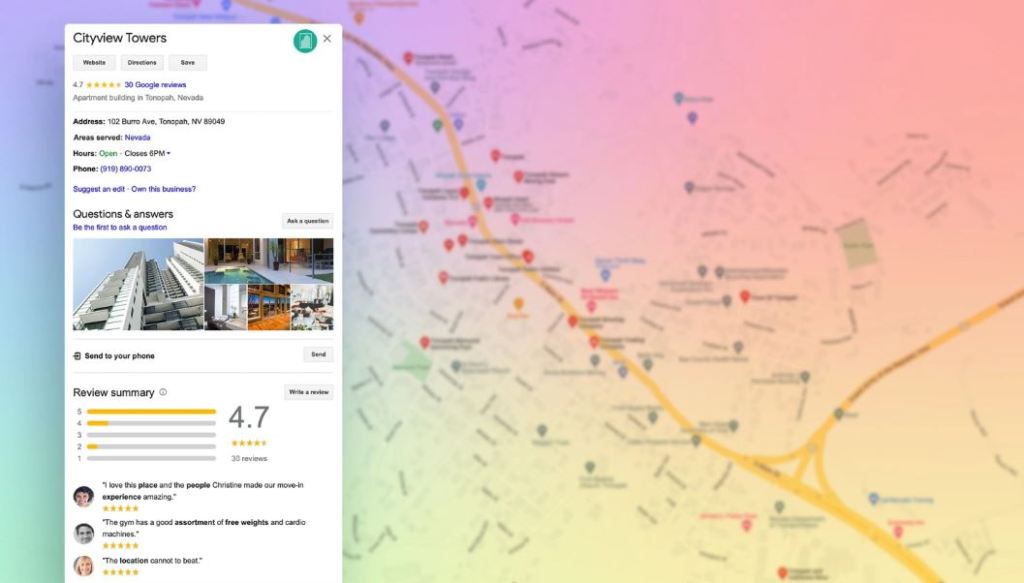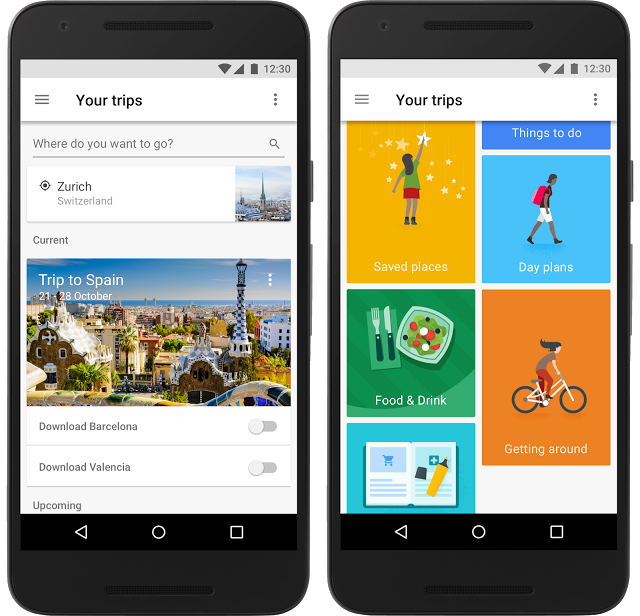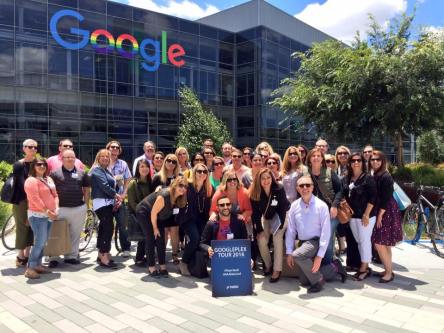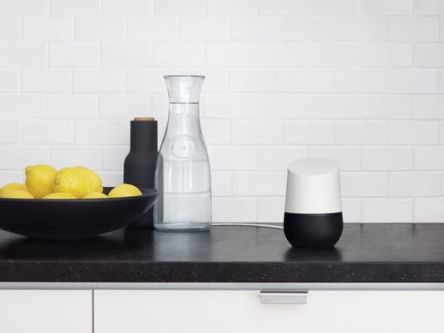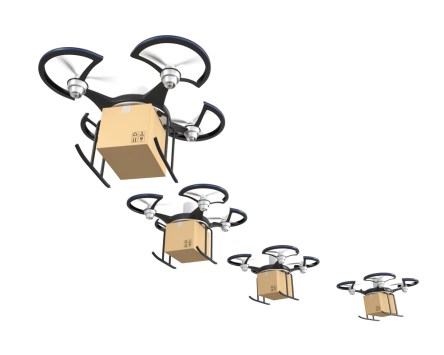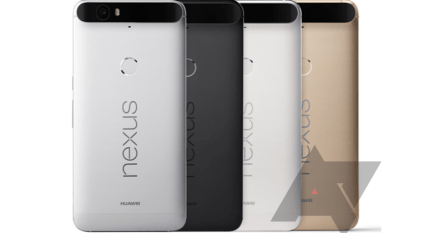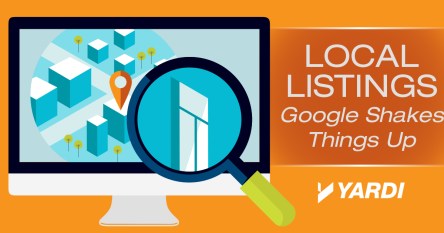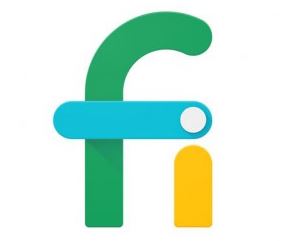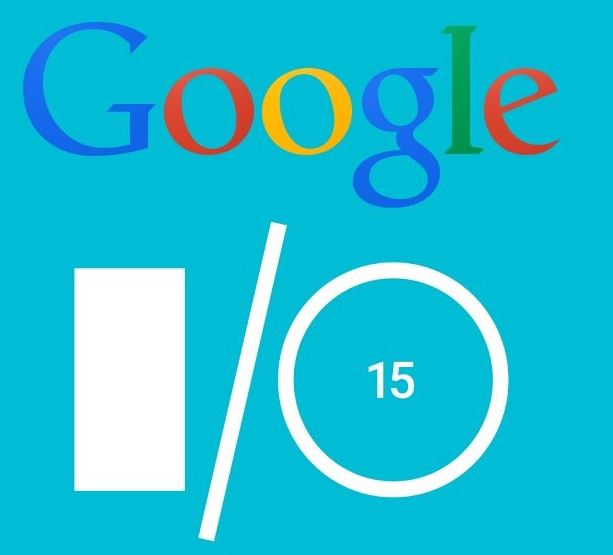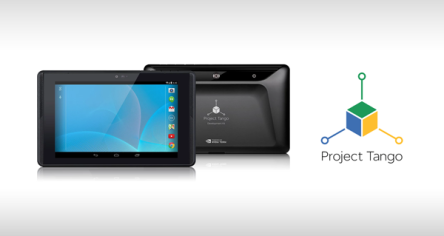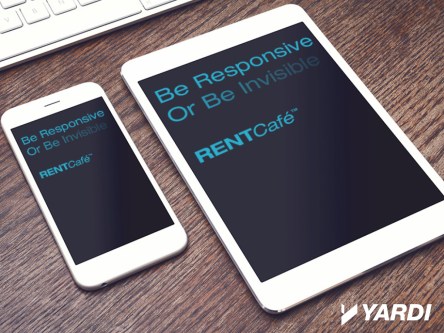You’ve probably heard the saying, “You never get a second chance to make a good first impression.” Think of your Google Business Profile (GBP) as your business’ digital first impression; it’s critical to put your best foot forward to attract the most traffic to your apartment community. In fact, did you know that 50% of GBP interactions lead to a website visit? Your GBP is a description of your business that appears above or to the side of the organic results in Google search, and it includes key information about your business such as your name, number, hours of operation and more. The goal of your GBP is to display an overview of the business Google thinks a user is searching for, and it actually plays a key role in your SEO strategy. Let’s dig into why your GBP is so important and how to make yours the best it can be. Why is your Google Business Profile important? Google is the leading search engine in the U.S., commanding a 92% market share. With this in mind, it’s important to be visible where the bulk of users are searching. Your GBP helps you stand out from the crowd and boosts property visibility. An accurate and up-to-date profile allows you to appear above organic search results, showcasing your business and all it offers in a clear and affective way. Your GBP is a great opportunity to take up critical real estate on the SERPs. A complete GBP also greatly increases your odds of appearing in the Google Local Map Pack. This set of featured results lists businesses in the searcher’s local area. If you’re included, it will definitely drive traffic to your website. Building an optimized Google Business Profile for apartments Since 64% of users find business contact information on GBP, it’s more important than ever to have a fully completed and error-free profile. It is one of the best ways to market your business online, and best of all, setting up your GBP is free! To get started, claim your business if Google has already set one up. To do this, search for your business on Google and click “Claim this business” if a GBP populates on the Search Engine Results Page. If it doesn’t exist yet you also have the opportunity to create a new one. Next, you should select the business category that applies to your business. For example, you can select “Apartment complex.” After this, you should add your business information. This includes name, address, phone number and URL. To top it off, don’t forget to add in your hours of operation and a brief description of your business. Finally, make sure to verify your business location by phone, text, email or via postcard sent to your physical address. GBP best practices Setting up your GBP is a good start, but you can’t just set it and forget it. Here are some best practices to follow to make sure you’re making the most of what a Google Business Profile for apartments can offer: Consistently check and update It’s important to check your GBP as often as possible. When talking about GBPs, Gretchen Walker, manager at REACH by RentCafe,comments, “It’s important to keep it up to date. Google allows users to come in and suggest changes to those profiles, and … just because it’s correct today doesn’t mean it’s going to be correct tomorrow.” If your name, address, phone number and URL are not consistent with other listings that feature your website, it can hurt your optimization. Respond to your reviews Managing your online reputation is an important part of your digital marketing strategy. Responding to reviews on your GBP is a great way to engage with clients while boosting your SEO. For more information on how to best respond to reviews, check out this article. Boost engagement by adding photos and videos Business profiles that add...
YMF New Orleans
3 Quick Takeaways
The Yardi Marketing Forum took New Orleans by storm earlier this month. This sold-out event drew top multifamily property marketers from across the country to The Big Easy for three days of fun, education and networking. View the photo album for a behind-the-scenes look. Attendees enjoyed focused attention from Yardi team members and exclusive guest speaker presentations. Google’s session on “The Age of Assistance” gave the audience three tips for winning in today’s competitive search environment: be there, be quick and be useful. Keep reading to see how you can apply these marketing takeaways from the forum to your property management business today. Be There You can’t win clicks if your customers can’t find you. Ben Waltzer from Google Fiber shared that today’s consumers are “more curious, more demanding and more impatient than ever before.” In fact, 15% of Google searches today are ones they’ve never seen before. Co-presenter Jeff Kirschenmann asserted that searchers “expect us to deliver relevant results at the right time.” Do you have a plan in place convert prospects by connecting during moments of intent? A successful marketing strategy includes being present at every stage of the customer journey. This might include SEO for long tail searches, paid ads for different demographics and nudge marketing that spurs website wafflers into action, as well as a healthy presence on review sites and social media platforms. If that sounds like a lot and you just don’t have the time or staff to handle it all, you might want to consider the advanced property marketing services of RENTCafé Reach. Be Quick Filmmaker Gavin Garrison’s talk focused on the emotional impact of storytelling – not just for video but for all forms of marketing. He spoke about using the power of relatable emotion to...
New from Google
Hardware Focus
Earlier this month, Google launched eight new hardware products — two versions of the Pixel 2, a new Daydream VR headset, two new Google Home speakers, an AI camera dubbed Google Clips, AI-enhanced headphones called Pixel Buds and the Pixelbook laptop. The second-generation family of consumer hardware products seems an effort to make up for the lost time in the hardware department. Google’s senior vice president of hardware, Rick Osterloh, reminded everyone at the launch that while late to the race, Google could still be a contender. After all, Apple was not first to market with MP3 players and smartphones, nor was Facebook the gate-clanging social network. Pixel 2 & 2XL Following last year’s Pixel, Google launched two new smartphones—Pixel 2 made by HTC and Pixel 2XL made by LG. The phones boast an overall score of 98 points in camera benchmark charts, surpassing every other smartphone currently on the market. Google managed to score higher with a single camera when competitors have done so with two. Google has also added the live photo and portrait modes, two of the features iPhone users have been playing with for awhile. Both phones are made of metal instead of glass or plastic, but for this premium look and feel the company had to ditch wireless charging. It does support wireless communication though, thanks to a glass window at the top of the phone. The headphone jack is missing on both models. Both devices run Android 8.0 (Oreo) with some custom software and features from Google. They’re water resistant and are powered by Snapdragon 835 processors with 4GB of RAM and storage of 64GB and 128GB. Connectivity-wise the devices support Bluetooth 5.0 + LE and have an USB-C port to be used with the headphones (there’s also...
Trojan Apps
Tech Security
Google has eliminated 300 apps from its online store after discovering a secret plugin silently installed across several Android devices. The seemingly innocuous apps were all secretly outfitted with the WiredX botnet. WiredX commandeers vulnerable Android phones and tablets, using the gadgets to kick off a DD0S attack. While Google does not yet have an official account of just how many devices currently host the WiredX botnet, Chad Seaman, a senior engineer at Akamai, a cyber security firm, estimates the number could reach 70,000 or more. “I know in the cases where we pulled data out of our platform for the people being targeted we saw 130,000 to 160,000 (unique Internet addresses) involved in the attack,” said Seaman. Silent, but Deadly The initial WiredX outbreak occurred on August 17th, when several Content Delivery Networks (CDNS) reported similar DDoS attacks. A search for the source eventually landed at the doorstep of Google’s Play Store, prompting the tech firm to pull hundreds of affected applications from its store and initiate procedures to remove the malware from infected devices. “We identified approximately 300 apps associated with the issue, blocked them from the Play Store, and we’re in the process of removing them from all affected devices,” a Google spokesperson said. “The researchers’ findings, combined with our own analysis, have enabled us to better protect Android users, everywhere.” The apps chosen to host the plugin provided genuine services, like ringtones and video players, but included hidden malware designed to commandeer the device for potential DDoS attacks. Once powered on, any infected phone or tablet mainly served as a soldier in a broader DDoS army – all unbeknownst to the user. While the apps themselves operated as promised, the malware surreptitiously connected to an internet server run by the WiredX...
Case Study
RentCafe Reach + Westdale
A case study reveals the rewarding results of a Yardi-led search engine optimization (SEO) and search engine marketing (SEM) campaign for Westdale, a national real estate investment and property management company. Using RentCafe Reach, Yardi tested, analyzed and optimized mobile ad campaigns for Westdale to produce fast results. These included a 160% increase in leads, 81% of which came from mobile devices like tablets and phones! About Westdale Westdale is headquartered in Dallas with six regional offices through the country. It focuses on acquiring, managing and developing investment opportunities and oversees approximately 200 properties in more than 30 cities. Westdale’s goal during the campaign was to work with Yardi to differentiate its communities from the competition and reach more potential renters. Process The case study focused on a RentCafe Reach campaign targeting rental leads. For Westdale’s campaign in a competitive Class A apartment rental market, Yardi researched, planned and executed SEO and SEM strategies to improve lead generation from organic and paid search results. Yardi is a certified Google AdWords partner, and RentCafe Reach campaign management is executed by Google AdWords Certified Specialists. This campaign used expanded text ads and other Google AdWords products. Conversion tracking throughout the campaign was used to support data driven marketing decisions. Results & Metrics The combination of SEO and SEM tactics created a large footprint in search results for Westdale, driving more qualified lead candidates. As a result, Westdale saw a significant improvement in the quality of both online and offline conversions at a lower cost. 160% increase in leads 66% increase in conversion rate 56% reduction in cost per lead Westdale’s Takeaways “When properties experience issues with low occupancy, combining SEO and AdWords brings immediate results,” said Jaymz Yates, director of technology at Westdale. “Yardi has fined...
A Smarter Vacation?
Google Trips App
A lot of work goes into planning a vacation these days. From airline and bus tickets to hotel reservations, you’re making a lot of plans and getting a lot of emails. It can be hard to find what you need when you’re in a hurry on the road. The Google Trips App is a travel guide and a smart vacation planner that was launched last year. Recently upgraded, it helps travelers experience more and organize less. Available both on Android and iOS, the free app compiles all your essential info in one place and makes it available even offline. How it works Once you download it, you need to login using your Gmail account. In just a few minutes, it scans your email, pulling up all trip-related information from your inbox—hotel receipts, car reservations, maps, flight confirmations etc. The best part of the app is that it also works offline. Once you’ve downloaded everything onto your phone, you have access to all the necessary info no matter where you are so you don’t have to use an expensive international data plan. After signing in, the app will show you a list of upcoming and already completed trips. Tap into a future trip and discover a colorful grid with these options: Reservations This feature organizes your flights, hotel information and any rental car reservations you may have made. It puts all your reservations in one place. If you click on an upcoming flight, for example, it gives you the times plus the terminal and gate as available. For hotels and hostels, Trips also shows a map. Things to do This section is the heart of the app. It compiles user data and reviews to offer you a list of things to see in a city...
Renewable Power
Google's energy business plan
After signing its first agreement to purchase all the electricity from a 114-megawatt wind farm in Iowa in 2010, Google set the target to be powered 100 percent by renewable energy only two years later. According to one of the company’s latest blog posts on the initiative, the said target will be reached in 2017, following a complex process involving many power purchase agreements. “To reach this goal we’ll be directly buying enough wind and solar electricity annually to account for every unit of electricity our operations consume, globally. And we’re focusing on creating new energy from renewable sources, so we only buy from projects that are funded by our purchases,” said Urs Urs Hölzle, Google’s senior VP of technical infrastructure. Technology companies have been criticized for the carbon footprint of their operations, which have expanded so fast they now account for about 2 percent of global greenhouse emissions, rivaling the aviation industry. The internet giant is already the world’s biggest corporate buyer of renewable electricity (Amazon is a distant second), last year buying 44 percent of its power from wind and solar farms. The majority of the green power comes from windfarms in the U.S., but also from projects around the world including sites in Sweden, the Netherlands and Chile. In order to get here, Google took part in a number of large-scale deals with renewable producers, guaranteeing to buy the energy they make with their wind turbines and solar cells. Those guarantees help wind companies obtain bank financing to build more turbines. One of the most attractive, cost-efficient features of wind power is that, unlike carbon-based power, wind supply prices don’t fluctuate, thus allowing Google to plan better. Moreover, the more renewable energy it purchases, the cheaper those sources get—in Chile, Google said,...
NAA 2016
Behind the Scenes with Yardi
The Yardi team traveled from all corners to attend the annual National Apartment Association (NAA) Education Conference and Exposition in San Francisco last week. More than 9,200 apartment industry professionals joined us for one of the biggest shows of the year. We participated in educational sessions, scoped out new trends, and had a blast meeting with clients and colleagues in the multifamily space. 7 Things We Learned at the 2016 NAA Education Conference and Expo Googlers Have It Good On Wednesday, our friends at Google took us (and some lucky clients) on a tour of the Googleplex in Mountain View. Between the campus bikes, nap pods, and friendly sculptures, their corporate culture is every bit as fantastic as we expected. Michael Strahan Wants to Be the Male Oprah He said so himself! NFL Hall of Famer Michael Strahan was the keynote speaker on Thursday. He discussed motivation, overcoming obstacles, and maximizing your career. He also talked real estate. “I love real estate. It’s a passion of mine. I am a big fan of real estate fixer-uppers. I’m good at demo. If you can’t hit a quarterback, hit a wall,” he joked. Strahan shared that it’s particularly important to him to acknowledge and thank everyone he works with – whether it’s a producer, make-up artist, or the custodial staff – noting that “everyone makes the ship run.” We couldn’t agree more. 3. ENERGY STAR Ratings Aren’t Just for Appliances It turns out that buildings can have ENERGY STAR ratings, too. On a panel moderated by Yardi’s Gene Cattani, Michael Zatz, manager for ENERGY STAR Commercial Buildings at U.S. Environmental Protection Agency (EPA), desc ribed how the EPA recently launched an aggressive multifamily energy scoring system. ENERGY STAR now has more than 30,000 multifamily properties using...
Google Home
Answering Your Questions
The latest Google I/O Developer Conference introduced Google Home, a compact Wi-Fi-connected speaker that’ll allow you to talk to your house and the internet. Virtual assistants powered by artificial intelligence are no longer a new thing, in fact, the niche has become the new battleground for consumer technology. Apple’s Siri, Microsoft’s Cortana and Amazon’s Echo Alexa voice agent are Google Home’s direct competitors. It seems Google wants to make up for the earlier misses on instant messaging and social media and came up with this. And since Google’s conversational assistant is similar to Cortana and Siri, it will be implemented in phones and wearables too. Google Home is a small, cylinder-shaped gadget with far-field microphones and speakers, that’s always listening for your questions and commands. The speaker bows out a bit and overall has a cute appearance. Its modular case is customizable, allowing to choose different base shells to match the environment. It also flaunts some LED lights that seem to dance a bit to show that it’s working. Behind it is executive Mario Quieroz, VP of product management and the man who launched Google’s Chromecast. The Google Home is his next act. The new member of the Google family is not portable, but that turns out good for the speaker-feature as Quieroz claims that it “really fills the room,” having “strong bass and clear highs”; this feature sounds reassuring because one of the main cases Google is foreseeing for it is listening to music. Furthermore, Home is designed with multiple rooms and speakers in mind from the very beginning, meaning that it supports multi room playback. Due to the fact that it uses the basic Cast standard, it uses the same technique as Google Cast Audio—you can talk to any speaker and tell...
Voice Search
Quick Best Practice Tips
Voice search is growing at an incredible pace. As we write content, we need to adapt to its unique format and language. Search Engine Land reports that voice search has risen significantly in the past year. Nearly 42 percent of users adopted voice search in the last six months alone. During our recent Open Café session, the State of Search Marketing, we polled 100 users from across the U.S. to learn how they interacted with voice search. This is what we learned: 10 percent of people surveyed use voice search all of the time 30 percent of respondents occasionally use voice search 35 percent of respondents rarely use voice search Voice search appeals to about 75 percent of respondents, and that number continues to grow. When you consider that the average renter will view 20 properties online, but will only visit three in person, it is vital that your property appears at the top of their voice search results. Take a second look at your content through the lens of voice search. There are two key components that differentiate voice search from text search. The first is more descriptive, longer-tail keywords and the second is question-based search phrases. Greater Description with Keyword In a text search, users adapt to computer language. Short phrases such as “apartments cabbagetown atlanta” or “dates YASC DC 2016” offer just enough info to connect users with general information. With voice search, users speak to their personal assistant as they would a friend, using full-length and often complex sentences. “Siri, find one-bedroom apartments for rent near a MARTA station in Cabbagetown” or “Okay, Google: find the dates for YASC in Washington, D.C. this year.” With this in mind, write content that reflects how people speak to one another. You can...
Google Local Pack
Searchability = Profitability
Do you want your listings to appear at the top of Google search results? Of course you do. Capitalizing upon your Google Business Listing is the first step towards a higher ranking. During our recent Open Café session, we polled 100 users from across the U.S. to learn if they maximize the potential of their Google Business Listings. This is what we learned: 55 percent of people surveyed have claimed their Google Business Listing 27 percent of users were not sure if they had claimed their Google Business Listing 18 percent of people surveyed have not claimed their Google Business Listing Your Google Business Listing is a quick, inexpensive way to enhance your digital presence and connect with prospects. It is the bridge between your property and prospects in your area who are searching for what you have to offer. By investing a little time in your Google Business Listing, you are making it easier for prospects to find your property through organic search as well as a listing in Google’s Local Pack. You’re likely familiar with Local Pack, even if you didn’t know the name of it. The Local Pack is composed of three business listings and a map that shows their location. Businesses that make it onto this top three list are more likely to get clicks since they are prominent in search results. Interested in joining that Local Pack? Here is how to get started: The Foundation Be sure to input all requested data on your Google Maps My Business Page, including hours of operation and details about your location. These key points will help Google match your property with the location terms used in searches. Proximity matters. “Near me” searches have increased by 130 percent in the last year. About...
Project SkyBender
5G Network Delivered by Drone
Google’s playfulness in domains ruled by curiosity and ambition is never-ending. The giant seems to be working on a new and very secretive project dubbed SkyBender, as reported by The Guardian. This is a new Internet-in-the-sky program designed to bring the next-generation 5G network. Unlike Project Loon, but part of the Google Access team that includes the balloon project, SkyBender wants to use outfitted drones with millimeter wave transceivers. First, let’s have a look at these millimeter waves—they are longer than infrared waves or x-rays, but shorter than radio waves or microwaves. The millimeter wave region of the electromagnetic spectrum corresponds to radio band frequencies of 30GHz to 300GHz, sometimes called the Extremely High Frequency (EHF) range. These are thought to be the future of high-speed data transmission technology and the backbone of 5G mobile networks. Millimeter waves have a shorter range than that of the mobile phone signal, they fade sooner and are easily disrupted by weather conditions like rain, fog, and snow. However, using the so called phased array antennas and focused beams, Google and others could potentially focus the transmissions over greater distances. But this requires a lot more power. The FCC said that 5G millimeter wave networks could hit speeds between 1GBps and 10GBps, or up to 40 times more than today’s 4G LTE systems. In case you’re wondering why millimeter waves, Jacques Rudell, a professor of electrical engineering at the University of Washington in Seattle and specialist in this technology, justified to The Guardian: “The huge advantage of millimeter wave is access to new spectrum because the existing cellphone spectrum is overcrowded. It’s packed and there’s nowhere else to go”. Google is not the first to work with millimeter wave technology and drones. In 2014, DARPA—the research arm of...
Online Marketing
Moments that Matter
It’s a fact: today’s renters want to do everything online. That means they want to use the Internet to find and research an apartment and even make a buying decision – sometimes without visiting the community. Is your property management business up to speed? The savvy apartment marketer needs to understand what Google calls “micro-moments” to learn how to drive prospects to property websites, grab their interest, and convert that lead more quickly than ever before. Micro-moments are your opportunities to be there, be useful, be quick, and connect the dots for consumers. What are micro-moments? According to Google, micro-moments “are critical touch points within today’s consumer journey, and when added together, they ultimately determine how that journey ends.” They are all those brief instances when people who are searching for a place to live reach a decision point. Do they click the link to your website? Or do they scroll past your search result to the next ad or competitors’ site? Once they’re on your site, do they call your leasing office or start an online application? Or do they abandon their search before taking action? Why do they matter? Online prospects place a high value on instant and accurate information. They don’t want to pick up the phone or come to your leasing office to get the answers they need. Where to start? Finding the right renters starts with attracting the right prospects. Search engine optimization (SEO) and search engine marketing (SEM) solutions will help you reach apartment shoppers at just the right moments. A solid SEO strategy delivers content that appeals to both customers and search engines, organically positioning you for maximum visibility in search results. SEM, also known as pay-per-click advertising, is about reach, relevance, and ROI. When the right...
Fiber for Frisco
Google to use existing cable
The dormant fiber-optic cables beneath San Francisco will soon awaken. Google parent Alphabet Inc. wants to expand its gigabit Internet service to parts of San Francisco, specifically apartments, condos, and affordable housing units. In most cities Google has wired, the company built its own physical infrastructure to support the service. The company installed network cables in Kansas City; Provo; Utah; and Austin, Texas. San Francisco will require tapping into existing fiber-optic cables. This was also the case in Atlanta, resulting in Fiber service access for fewer neighborhoods than other Fiber cities. But there is also an upside: a much faster path to launch. “To date, we’ve focused mostly on building fiber-optic networks from scratch,” said Michael Slinger, Google Fiber’s business operations director. “Now, as Google Fiber grows, we’re looking for more ways to serve cities of different shapes and sizes.” Google Fiber is already taking this approach in other markets, including Huntsville, Ala., where earlier this year it announced plans to launch using the city’s municipal network. Alphabet’s high-speed Internet service is 85 times faster than the typical residential connection. San Francisco is the 11th U.S. city with existing or planned Fiber service. Single-family homes are not considered for now, because the company wants to serve denser communities first. Also, many of the single-family residences are not close to the existing cables. Alphabet declined to say how many of San Francisco’s homes it aims to serve. As it has done elsewhere, Google Fiber plans to provide free gigabit internet service to “some public and affordable housing properties.” Google is also working with a non-profit to teach low-income San Franciscans basic internet skills, like how to set up an email account or apply for a job. The fiber network cable doesn’t belong to the city of San...
Drone Deliveries
Could be around the corner
Drones are unstoppable. Within the next one to three years we’ll receive our orders via drones if the private sector and government work hand in hand. Giants like Google and Amazon, and Wal-Mart have all announced working on developing their own fleet of drones to ship orders. The main setback remains the number of regulatory issues which need ironing out first. Currently, businesses interested in flying drones for commercial purposes need to seek approval from the Federal Aviation Administration on a case-by-case basis. Furthermore, under current drone rules, companies aren’t allowed to fly drones at night and drone operators can’t fly more than one drone at a time—well, except for the special show Intel prepared in collaboration with Ars Electronica Futurelab near Hamburg where four drone operators had each 25 drones under their command. You can watch the thing of beauty in the below video. Earlier this year, FAA Administrator Michael Huerta announced that the government plans to finalize its drone rules for commercial operations by late spring. The FAA enlisted a handful a drone makers, industry advocates, and retailers such as Google to help create the registration system and rules. The respective registration system came online in late December; since then 181,000 drones have been logged in its database. Google has been exploring the use of drones for deliveries over the past three years. Research continues under Dave Vos, head of Google X’s Project Wing experimental drone delivery program. At an aviation industry event in Washington, he stated that drones will be safer than general aviation and that they’ll operate quietly enough so as to not disturb anyone. According to Vos and his Jetsonian vision, people will eventually be transported from one point to another via autonomous airplanes. “Moving people and stuff around...
Adding AdWords
Using Pay-Per-Click Campaigns
By now we’re sure you’ve heard of Google AdWords, those pay-per-click (PPC) ads that pop up in search results on the largest search engine in the world. Whether you do a Google search from your desktop or mobile device, you’ll see them—serving up the most relevant results to get you to click through to the advertisers’ websites. If you’re interested in learning how to use Google AdWords for search engine marketing (SEM), this blog post will help you get started. First, we’re going to teach you the basic terminology and functions. Then we’ll share three best practices that will help you get results. And finally we’ll introduce you to a service that will help power your AdWords campaigns and deliver measurable results. Ready to learn more about Google AdWords for property marketing? Ok, here we go! Getting Started Get your ad on Google, the search engine that processes over 3.5 billion searches per day. Google AdWords helps you advertise your business or community directly to potential leads at the very moment that they’re searching for the things you offer. Creating Ads Creating an AdWords ad is a three-step process. First you write the ad, including a headline that identifies your product or service, a link to the landing page you want people to go to, and some text with a call to action. Then you choose the search terms that will prompt your ad to appear in Google search results. And finally, you set your daily budget. Ad Groups Ad groups are groups of ads with slight copy, url, or delivery (desktop vs. mobile) differences that target the same set of search terms. Campaigns A campaign is a set of ad groups that have the same budget, location targeting, and more. You might have...
Bing: Better Maps?
Using live traffic cameras
Bing is far from being one of the popular kids on the internet playground. But here’s some good news: Bing has updated Bing Maps with the option to view 35,000 live traffic cameras in 11 unnamed countries including the US and Spain. Pretty cool, no? This looks like a helpful tool in checking major roads for congestion before hitting the road. Moreover, the feature ties into the Clearflow traffic prediction algorithm which was launched in mid-November. The move points to Bing Maps planning on becoming a strong competitor to Google Maps; Microsoft’s traffic service is well aware of the fact that it needs to offer what the competition doesn’t have if it wants to lure Google loyalists. However, Microsoft doesn’t want to force-feed the new service, thus those who are not interested in the camera feeds can toggle the feature off—this will hide the camera icons on the maps. To access the traffic camera feature, users need to first download the Bing Maps app and then with a simple tap of the Traffic button (at the top of the app) they can study the traffic levels. Viewing multiple cameras at the same time is also possible, causing the screen to divide into smaller windows. The user has the ability to configure a specific route, too. This way, the app will help peruse through the cameras that are on the path. Bing Maps separates traffic levels in four color-coded categories: green for no traffic, yellow for light traffic, orange for moderate traffic, and red for heavy traffic. Having access to this piece of information from the traffic cameras will make each and every driver plan a better, quicker route to their destination. Furthermore, users can compare traffic cameras in the area by going to the...
Nexus 6P
New Google Phone
Google’s handset family welcomed a sibling that’s first of its kind: first one made of metal, first one made by Huawei, and the first one to include fingerprint reader and Android 6.0 known as Marshmallow. Nexus 6P is the new 5.7-inch device compatible with all major carriers, besides Google’s own unique Google-Fi wireless service that allows the user to transition between carriers without swapping hardware. The “P” in the name stands for Premium—due to its metal unibody design that’s placing it in direct competition with the aluminum iPhone 6S Plus and glass-and-metal infused Samsung Galaxy Note 5. It’s relieving to see how Huawei built the 6P to look and feel different than any other Google-commissioned phone—ditching the cheap plastic in the Nexus 5X (built by LG) for the metal design. At 5.27 x 3.06 x 0.28 inches, the device is slightly taller than Nexus 6, but notably narrower and thinner. Furthermore, even though Huawei raised the bar on the phone’s specs, Nexus 6P weighs only 6.27 ounces; the way they’ve fit everything in though is another story—the 12.3MP camera creates an unsightly-looking rear bulge with a black strip where the lens, flash, and an array of antennae are positioned; luckily this seems to be the only eyesore aspect of the device. On the bottom of the phone sits a reversible USB-C port, replacing the micro USB in favor of faster charging. A 3.5mm headphone jack sits at the top and the stereo speakers are now placed to the front. Nexus 6P has an AMOLED display with 2,560 x 1,440 resolution at 518ppi, looking brighter and more colorful than the previous Nexus 6, but also extremely saturated. On the exterior, Nexus 6P comes in the traditional white, silver and black. The 12MP camera shoots sharp,...
Local Listings
Google Shakes It Up
Where were you on the night of August 6? While you were probably sleeping (we certainly were), Google rolled out changes to the way local businesses appear in search results. This update affects everyone from restaurants and retail stores to—yep, you guessed it—apartment communities and property management companies. What? Google has updated how local results appear to both desktop and mobile searchers. Before the update, seven local businesses would appear under the map that displays local search results. After the update, only three local businesses appear. What was known as the “7-pack” by SEO experts is now the “3-pack.” Instead of ranking in the top seven local results for a search, you now have to rank in the top three to show up on the first page. Why? While Google has called this an update that “provides people with more relevant information,” multiple sources have suggested that this might be a move to encourage more businesses to use AdWords, Google’s pay per click (PPC) advertising tool. When the chance that you will appear in organic search results is reduced, you will probably be more inclined to pay for priority placement. How will it affect property management? Less space is dedicated to local results Before your business had to rank in the top seven to appear organically, now it has to be in the top three Less information now appears under the local listings; exact addresses and Google+ links have been removed Business hours have been added On mobile searches, reviews and the click-to-call button appear (websites do not) On desktop searches, reviews and website links appear (phone numbers do not) Although fewer local listings are now instantly visible, when a user does click through to get more information about local results, 17 additional local...
Project Fi
Google Cell Service
Google is already Internet Service Provider and pay-TV operator. Now, it’s starting its adventure as mobile virtual network operator (MVNO). Frankly, it was about time to be able to Google a phone call. The long-awaited cell phone service – Project Fi is finally here. For now, the product can be considered an experiment; Even more so considering that it will be available only to people using Google’s flagship phone, the Nexus 6. This choice doesn’t only limit its reach, but also doesn’t make Google a serious competitor to Verizon, AT&T, and other wireless service providers. The service offers the same basic functionality as traditional wireless carriers: voice, text, and Internet access – but at a lower price than many of the plans out there. It can be called an attempt to combine cellular calls and VoIP calls (like those offered by Skype) into one phone number and service. “Wherever you’re connected to Wi-Fi — whether that’s at home, your favorite coffee shop or your Batcave — you can talk and text like you normally do,” wrote Nick Fox, Google’s vice president of communications products, in a blog post. “If you leave an area of Wi-Fi coverage, your call will seamlessly transition from Wi-Fi to cell networks so your conversation doesn’t skip a beat.” Project Fi is designed to be able to switch between different high-speed wireless networks operated by Sprint and T-Mobile, choosing the stronger one in any given area. Moreover, phones on Project Fi will switch from cellular networks to Wi-Fi networks when available to place calls or access the Internet without using the customer’s data plans. The service will also bounce around between devices, allowing users to talk and text on smartphones, tablets and laptops. Google won’t be building its own cell phone...
Google I/O 2015
Keynote Highlights
SAN FRANCISCO – Last week, The Moscone Center West hosted one of the world’s largest games of Pong while Google presented the products and services it’s been brewing up for the past year. At the I/O keynote, Google showed primary focus on optimizing Android, complemented by a new Google Cardboard and a VR camera system that will be sold by GoPro. Also, we’re found out that right now there are out there over 4,000 distinct devices using Android of which you probably only know a few, such as Samsung, LG, Motorola. And Sundar Pichai, senior vice president, announced HBO coming to Google Play. Android M mostly follows its predecessor L, but comes with a few big improvements. App Permissions – is a way to simplify what data you allow the apps to access. Instead of the long list of permissions upon installation, the user will be prompted for permission when the app needs to use a feature, such as microphone or camera. App Links – or Chrome Custom Tabs, is a useful feature that enables developers to add custom components that overlay on top of apps; for instance, Pinterest can add custom transition animation to link to the web, within the app. Furthermore, there’s a new app linking feature that allows apps to verify links to switch from app to app rapidly. Battery & Charging – introduces Doze, a new feature that in Android M uses motion detection to go into a deeper sleep state if inactive for longer periods of time. While dozing, the device will still be able to respond to high-priority messages and alarms. Their test in which a Nexus 9 running on Lollipop against M Nexus showed that the latter lasted up to two times longer in standby, Google claims....
Optimizing ROI
Google Analytics for Properties
Savvy marketers know the importance of having good data to draw on when making marketing decisions. Google Analytics is the most widely known, free analytics platform available. Last month, the digital marketing experts at RentCafe hosted a call to dig in to the importance of using analytics data to understand your online audience, traffic, and conversions. One of the biggest complaints we hear about Google Analytics is that the information provided is overwhelming, making it difficult to know which reports are most important for property managers. In fact, a large percentage of people on our call said that they find it too confusing to use regularly (see below). We think that’s a shame! There are bits and pieces within each reporting segment that are relevant to all marketers. With the right questions in mind, you can use the data to make informed decisions about your marketing strategy. Who are you marketing to? The Audience tab provides in-depth reporting into who your current website audience is. It offers a broad overview of your audience profile, including how much time they spend on your site, where they’re located, and information about the devices they use. You can also learn a great deal about the demographics of your online audience. To put this information to use, start by taking a look at how well your online demographic information matches what you see on the property itself. Ask yourself if you’re actually reaching the people you want to target. If you’re trying to shift the demographics within your community, have you positioned your website to appeal to the new prospects you want to attract? Geo-location information will help you see if the audience visiting your site is coming from the cities you’d expect. Which channels are you relying...
Project Tango Tablet
3D-mapping for everyone
Google likes to play, and the company’s innovative ATAP group has been toying with a 3D-mapping project that would enable hardware to approximate with the same visual acuity of the human eye. The feature was already available in autonomous robots and military research labs, but Google’s Advanced Technologies and Projects division wants to make it available to everyone. Project lead Johnny Lee and his team intend to break the boundaries of mobile devices, currently limited to their own screens, and extend to them the human-scale understanding of space and motion. The mission is to build mobile devices capable of using depth sensors and high-spec cameras to craft three-dimensional maps more cheaply and easily than existing efforts. In collaboration with universities, research labs, and industrial partners, the team has built prototypes and shared them with developers who can imagine a wide range of possibilities and work on bringing those ideas into reality. So far ATAP released two pieces of hardware: a prototype smartphone equipped with Kinect-like 3D sensors and other components and a more powerful seven-inch tablet. The tablet has a 1080p display that runs on Android 4.4 KitKat powered by NVIDIA’s quad-core Tegra K1 chip next to 4GB of RAM and 128GB internal storage, without microSD slot. Additionally it features USB 3.0, micro-HDMI, Bluetooth LE and LTE. The Tango tablet was built with a depth sensor on the back and two cameras: one has a 4MP sensor capable of offering high light sensitivity and fast speeds, and the other tracks motion more broadly with a 170-degree wide-angle fisheye lens. Designed with developers in mind, the tablet doesn’t focus on aesthetics, but doesn’t disregard it completely. The cameras are mounted at a 13-degree angle to give the needed view for gathering accurate data without having...
Be Responsive
Google Will Reward You
It’s increasingly apparent that the future of computing is moving from one type of screen – traditional desktop monitors – to many types of screens with a multitude of different sizes and resolutions. But computers themselves aren’t driving this sea change, consumers are. Today’s online renters are using laptops, tablets, phones and even watches to search the web for available apartments. What does this mean for property marketing websites? To stay ahead of the curve, you need a site that looks good and functions well on any and all devices. It’s time to make the switch to responsive design. (And there’s a really good reason to do it before April 21st of this year. Keep reading to find out why it’s critical to become responsive sooner rather than later…) What is responsive design? Responsive design is the practice of creating a website that provides an optimal user experience across all devices. Responsive web designs resize and reformat page content in response to screen size and resolution, making your website compatible with all Internet-enabled devices. Why is responsive design important for SEO? Responsive design uses a single URL for all platforms, making it easy for search engine robots to crawl and index your website. In fact, responsive design is Google’s recommended configuration. This Google Developers article details the top three things you should know when building a site for mobile devices. Guess what made the list? Yep, responsive design! The article specifically states: “Select a mobile template, theme, or design that’s consistent for all devices (i.e., use responsive web design).” If that’s not enough to get you excited about responsive design – though we really think it should be – consider that responsive websites also tend to reduce bounce rates because they offer a better...
Project Loon
Internet, Everywhere
With all the amazing progress technology has made so far, two-thirds of the world’s population does not have access to Internet, 4 billion people out of Earth’s 7 billion inhabitants. Google’s Project Loon aims to change that. This larger part of the population who needs access to the Internet either cannot afford the cost of a connection, or none exists where they live. Google’s project is among the most fantastical ones out there. What Loony thing is this? Project Loon is the innovative work of engineers attempting to bring internet access to rural and remote areas as well as to bring people back online after disasters. The concept is a network of high-altitude balloons running on the edge of the universe, also known as the stratosphere, at about 20 miles (32km) high. This space in the sky is sort of “above the sky,” twice as high as where the planes fly so that no interference actually occurs. This aerial wireless network can provide up to 3G-like speeds, they say. The project began in 2013 in New Zealand where a small group of pioneers tested the Loon technology. Later, the pilot test expanded to California’s Central Valley and in Northeast Brazil; the results of the pilot tests are being used to improve the technology in preparation for the next stages of the project. The balloons are moved using wind data from the National Oceanic and Atmospheric Administration (NOAA). Once they collect the information about the speed and direction of the wind, they will move across the stratosphere. To help resist high pressure in the stratosphere, the central control of each balloon is covered by a sheet of polyethylene plastic filled with helium. This envelope apparently has the ability to keep the controllers in the air...

